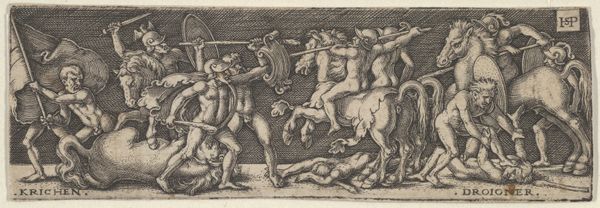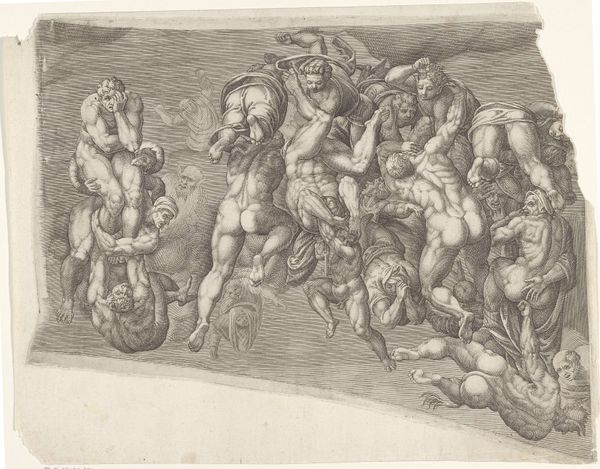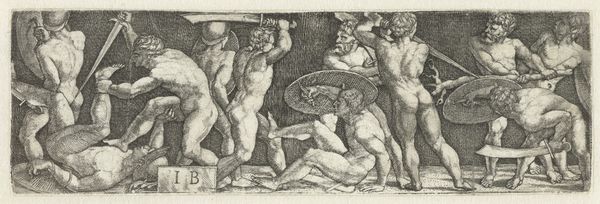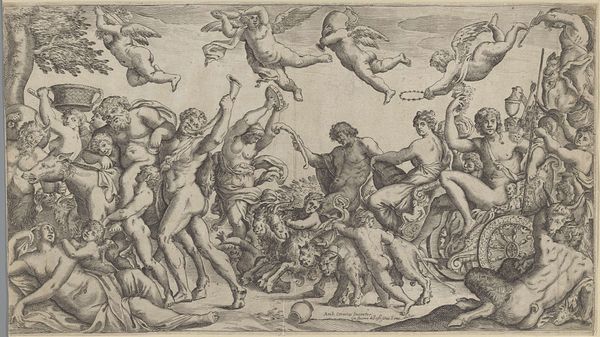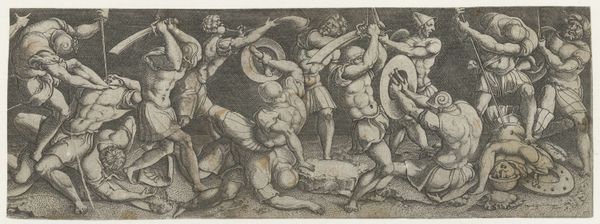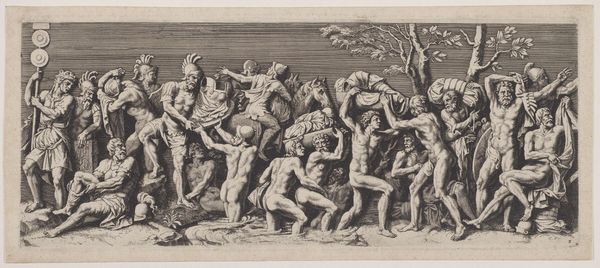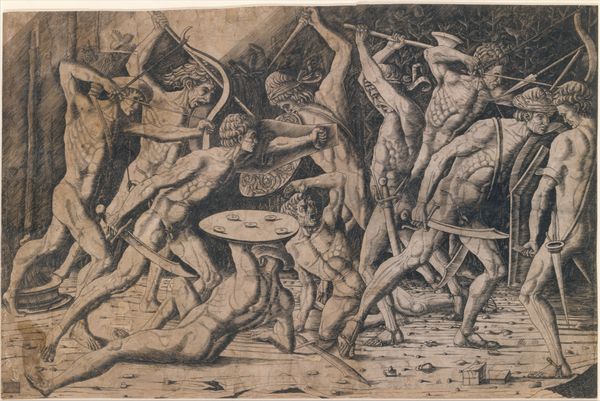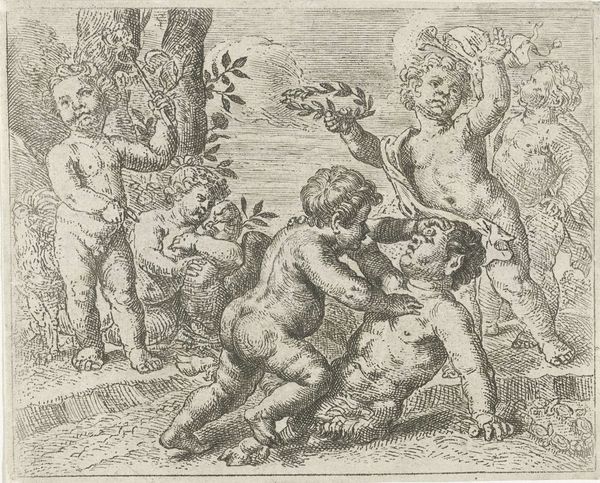
Gevecht tussen naakte mannen, waarvan sommigen versierd met veren 1528 - 1583
0:00
0:00
etiennedelaune
Rijksmuseum
drawing, print, ink, engraving
#
drawing
#
pen drawing
# print
#
mannerism
#
figuration
#
ink
#
history-painting
#
nude
#
engraving
Dimensions: height 66 mm, width 220 mm
Copyright: Rijks Museum: Open Domain
Curator: This pen and ink drawing, an engraving in fact, now residing at the Rijksmuseum, is entitled "Gevecht tussen naakte mannen, waarvan sommigen versierd met veren," or "Fight between naked men, some decorated with feathers." It comes to us from the hand of Etienne Delaune, likely sometime between 1528 and 1583. Editor: It’s a rather unsettling image. The compressed composition feels almost claustrophobic, amplifying the violence. What story is being told here? Curator: Delaune often created works that, at first glance, seem to be simple depictions, but closer inspection reveals commentary on the social and political unrest of his time. The exaggerated musculature and the frenzied combat call back to Mannerist aesthetics. The feathers, while decorative, were undoubtedly markers of otherness in 16th-century Europe, aligning with contemporary ideas about colonialism and power. Editor: The feathered figures are quite striking. Do you think those feathers held symbolic weight? Feathers can signify freedom, or lightness. It seems odd given this composition full of anger and aggression. Curator: Symbols aren't static, are they? These adornments mark those men as separate. We must ask: Who has the power to decide what is normal and what is “other?” Consider the artist’s choice to depict this battle with such explicit nudity. It exposes vulnerability but also dehumanizes. Editor: I see your point. I read a complete loss of dignity amidst the brutal realism. Perhaps, rather than celebrating virility, this work attempts to reflect violence in all its barbaric rawness, a loss of humanity in this relentless conflict. What lingers for me, regardless, is the almost timeless nature of such violent imagery. It taps into an endless cycle of conflict that echoes even now. Curator: Yes, in its historical context, it reflects early modern anxieties about encountering new peoples and cultures, and reflects how that otherness, or perceived threat, often leads to conflict and dehumanization. Its power lies in this persistent relevance.
Comments
No comments
Be the first to comment and join the conversation on the ultimate creative platform.


